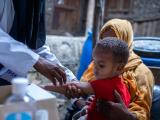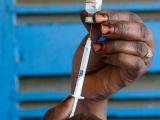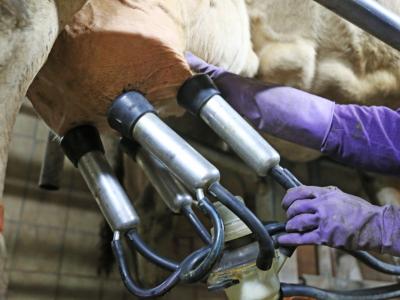Jan 22, 2013 (CIDRAP News) – The risks in working with potentially dangerous pathogens in US labs are low to the scientists involved as well as to the general public, according to two recent reports on safety incidents.
One of the reports details theft, loss, and release (TLR) of select agents and toxins that occurred at US labs from 2004 through 2010. It says that 11 lab-acquired infections were linked to select-agent releases that were reported to the Centers for Disease Control and Prevention (CDC), but none were fatal or spread to others.
The report is the first accounting of TLR events since Congress passed laws in 2002—in the wake of the 2001 anthrax attacks—requiring the government to regulate the possession, use, and transfer of the potential bioterror agents. Authored by CDC officials, the report appears in the latest issue of Applied Biosafety, the journal of the American Biological Safety Association.
The other report is a compilation of data from safety reports related to work conducted in the US Army Medical Research Institute of Infectious Diseases' (USAMRIID) high-containment labs in 2010 and 2012. USAMRIID posted the information on its Web site in early January.
The select agent TLR reporting requirement is designed to help track pathogen inventories, their movements that could results in a theft or loss of the materials, and the public health threat of a release of the agents from the facilities. The rules apply to labs registered by the CDC and the US Department of Agriculture (USDA) Animal and Plant Health Inspection Service (APHIS) and to others, primarily diagnostic labs, that aren't registered to handle the agents, but occasionally encounter them during testing.
One loss during shipment
Based on their review, the CDC officials found no reports of theft of select agents. They found one confirmed loss during shipment among 3,412 transfers—a Coccidioides immitis sample. FBI agents concluded it was apparently destroyed during processing at a commercial shipping facility in the United States.
Of the 11 lab-acquired infections that were linked to select-agent releases, none were fatal and none resulted in secondary infections. Four cases were related to exposure to Brucella melitensis, two to B Suis, four to Francisella tularensis, and one to C immitis/posadasii. The officials estimated that about 10,000 lab workers had approved access to the agents during each year of the study period.
The number of reports submitted to the CDC increased over the study period from 16 the first year to 269 in 2010. The authors wrote that the increase probably reflects more outreach and education about the TLR reporting requirements, including guidance that was released in early 2008.
About half of the reports over the time period were submitted by registered facilities, but in 2009 and 2010 reports from unregistered labs slightly exceeded ones from registered labs. Most incidents at registered labs occurred in biosafety level 3 (BSL-3) conditions, and most at unregistered labs occurred in biosafety level 2 (BSL-2) facilities. Most of the reports from both types of labs involved bacterial agents.
USAMRIID reports no illnesses
USAMRIID said it posted the data on safety incidents to make information about potential threats more available. It said no illnesses were reported for 2010 and 2011.
In 2010, of 40,631 entries into BSL-3 labs, there were 34 safety incidents, including 15 with potential biological exposure, which required precautionary medical surveillance. For BSL-4 labs that year, with 11,011 entries there were 6 incidents, including 3 possible exposures. Overall, the incident rates were .084% for BSL-3 labs and .054% for BSL-4 labs.
In 2011, there were 9 potential biological exposures at BSL-3 labs and 1 at a BSL-4 lab. The respective rates of incidents were .081% and .261%. The increase in incidents at BSL-4 labs that year stemmed from a change in internal reporting requirements after USAMRIID began tracking information on small pin holes and tears in the outer layer of gloves in an effort to identify poorly performing ones and to standardize the ones used across all of its labs, according to the report.
Joseph Kanabrocki, PhD, assistant dean for biosafety and associate professor of microbiology at the University of Chicago, told CIDRAP News that taken together, the two reports are good news, showing extremely low levels of incidents compared with the number of lab workers in the US who handle select agents each year. "There is no such thing as no risk. Accidents do happen," he said.
"The biomedical science enterprise has a very good track record as an industry, but sometimes people have the impression that the scientists are cowboys doing sloppy work," he commented.
The CDC researchers, in their discussion of the findings, said the average rate of laboratory-acquired infections in registered facilities of 1.6 per 10,000 authorized workers is low compared with occupational illness rates in other scientific research and development facilities. According to Department of Labor statistics, the latter ranged from 22.3 illnesses per 10,000 workers in 2006 to 15.9 illnesses per 10,000 workers in 2009.
Kanabrocki said another encouraging finding was that the CDC report found only one pathogen loss during shipment, a step in the process that is sometimes seen as the weakest link in the security chain.
He said he was surprised at the number of reports that came from unregistered labs, though it isn't unusual for diagnostic labs to stumble upon a select agent in the hundreds to thousands of samples they process each year. When a select agent is identified, it is reported to the Select Agent Program and then destroyed. The findings might be useful for guiding future training activities, Kanabrocki said.
Though TLR reporting seems to be geared toward tracking any possible threats to the public, Kanabrocki said he supports the idea of separating out occupational exposures from the TLR paradigm, because they are bound to occur occasionally and they don't represent an uncontrolled, unmanaged release, such as agent theft or loss, he said.
Putting lab infections in an occupational exposure context could also go a long way in encouraging a culture of reporting, he said.
Henkel RD, Miller T, Weyant RS. Monitoring select agent theft, loss and release reports in the United States—2004-2010. Applied Biosafety 2012;17(4):171-80
See also:




















